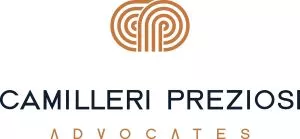With less than one month to go to the implementation of the EU Sustainable Finance Disclosure Regulation (Regulation (EU) 2019/2088) ("SFDR"), published in the Official Journal of the EU on 9 December 2019 as part of the EU Commission's sustainable finance action plan, firms falling within its scope must now take the necessary steps to ensure compliance with the SFDR requirements, applicable as from 10 March 2021.
Which firms and products does the SDFR cover?
The SFDR (the "Level 1" text) will apply directly to:
- "financial market participants", that is: alternative investment fund managers (AIFMs), UCITS management companies, investment firms and credit institutions providing portfolio management, managers of qualifying venture capital funds, managers of qualifying social entrepreneurship funds, insurance undertakings providing insurance-based investment products (IBIPs), pan-European personal pension product (PEPP) providers, manufacturers of pension products, and institutions for occupation retirement provision (IORPs), and
- "financial advisors", that is: insurance undertakings or intermediaries providing insurance advice with regard to IBIPs, and AIFMs, UCITS management companies, investment firms and credit institutions providing investment advice.
While many aspects of the SFDR will apply to in-scope firms in respect of any financial products made available by them, certain disclosure obligations will be aimed specifically at those financial products with an express ESG-focus, as explained further below.
Sustainability-related disclosure obligations under the SFDR
The principal objectives of the SFDR are to standardise sustainability disclosures, enhance the comparability of financial products and combat greenwashing. To this end, firms within scope of the SFDR will be required to disclose information on two levels:
At firm-level, in-scope firms will need to publish, on their website:
- information about their policies on the integration of sustainability risks in their investment decisions or advice;
- information on how their remuneration policies are consistent with the integration of sustainability risks;
- information on how they take into account the principal adverse impacts of investment decisions on sustainability factors (on a comply or explain basis).
In any case, the "opt-out" will cease to be available after 30 June 2021 for financial market participants exceeding the average number of 500 employees during the financial year, or those financial market participants which are parent undertakings of a large group and exceed, on a consolidated basis, the aforementioned criterion.
At product-level, in-scope firms will need to assess whether their products qualify as ESG-focused products, aligned with either Article 8 or Article 9 of the SFDR. With the object of ensuring that end-investors have greater clarity as to how sustainable a product truly is, the SFRD creates two categories of ESG products: "dark green" (Article 9) products, being products having sustainable investment as their objective; and "light green" (Article 8) products, which are products that promote environmental and, or social characteristics.
Where an Article 8 or Article 9 categorisation is elected, firms will be subject to higher standards of disclosure, with the obligation to describe, in their pre-contractual documentation and periodic reports, how such levels of sustainability have been attained.
All financial products, regardless of any sustainability characteristic or objective, will nonetheless be captured by the so-called "neutral" Article 6 disclosure requirements, which entails the disclosure, in pre-contractual documentation, the manner in which sustainability risks are integrated into investment decisions or advice and the likely impacts of the sustainability risks on the returns of the product. Alternatively, firms will be required to explain why such sustainability risks are not considered relevant.
The correct categorisation of a financial product under the SFDR will become increasingly important, from both a compliance and commercial perspective, once the more detailed "Level 2" measures take effect. These proposed measures provide a strong basis for improving the "Level 1" environmental, social and governance disclosures on the principal adverse impacts of investment decisions and on the sustainability features of a wide range of financial products with the ultimate aim of strengthening protection for end-investors.
"Level 2" disclosure requirements: publication of the draft RTS
On 4 February 2021, the Joint Committee of the European Bank Authority, the European Insurance and Occupational Pensions Authority and the European Securities and Markets Authority, collectively referred to as the European Supervisory Authority ("ESAs"), delivered to the European Commission the draft Regulatory Technical Standards ("RTS"), supplementing the SFDR on the content, presentation and methodologies of sustainability-related disclosures. Most notably, the RTS provide in-scope firms with further guidance on the "principal adverse impact" concept, whittling down the number of "adverse impact" indicators that require mandatory reporting. Additionally, the RTS give greater certainty on the disclosure requirements for products fitting the Article 8 or Article 9 classification.
The European Commission is expected to endorse the RTS within three months of their publication. While financial market participants and financial advisors are required to apply most of the provisions on sustainability-related disclosures laid down in the SFDR from 10 March 2021, the ESAs have proposed that the application of the draft RTS will be delayed to 1 January 2022, to provide market participants with sufficient time for data gathering and modification of their existing processes. The draft RTS may be accessed here.
Way forward: what should in-scope firms do between now and 10 March 2021?
The first step will be for firms to carry out a 'scoping exercise' and determine the extent to which they will be bound by the SFDR disclosure requirements. In-scope firms will need to assess whether their products classify as Article 8 or Article 9 products. They will further need to consider how they currently articulate sustainability risks to their end-investors or clients, and whether this aligns with the SFDR. In particular, in-scope firms may need to update their current disclosures in line with the "Level 1" SFDR requirements by 10 March 2021, potentially followed by a further set of updates upon implementation of the "Level 2" rules.
On 9 February 2021, the MFSA issued a circular announcing the introduction of a fast-track filing process for the submission of updates to offering documents of locally based collective investment schemes which are updated on the "Level 1" text of the SFDR. Similarly to processes established by regulators in other member states, most notably in Luxembourg and Ireland, a 'self-certification' procedure has been adopted by the MFSA, by virtue of which AIFMs, UCITS management companies and investment firms authorised under MiFID II which manage PIF structures by way of delegation, will be able to 'self-certify' their compliance with the SFDR and notify the MFSA accordingly. The MFSA has highlighted which documentation will be subject to the fast-track process, and has stressed that any changes unrelated to the SFDR will be subject to the standard authorisation process.
How we can help
With the first SFDR deadline fast approaching, now is the time for firms to take action and ensure SFDR compliance prior to 10 March 2021. We may facilitate your firm in the process of achieving SFDR compliance, by assisting in the following:
- Scoping exercise: determining the scope of application of the SFDR against your firm and your financial products;
- Gap analysis: perform a gap analysis to identify shortfalls in compliance and assess what actions needs to be taken to ensure SFDR compliance;
- Categorisation: assessing the correct categorisation of your financial products, and determining whether additional disclosure requirements will need to be made;
- Implementation of ESG disclosures: updating current disclosures in line with SFDR requirements, particularly drafting updates to offering documentation, revising existing policies including but not limited to the remuneration policy, preparing new policies on the integration of sustainability risks, and updating content for publication on the website.
The content of this article is intended to provide a general guide to the subject matter. Specialist advice should be sought about your specific circumstances.



